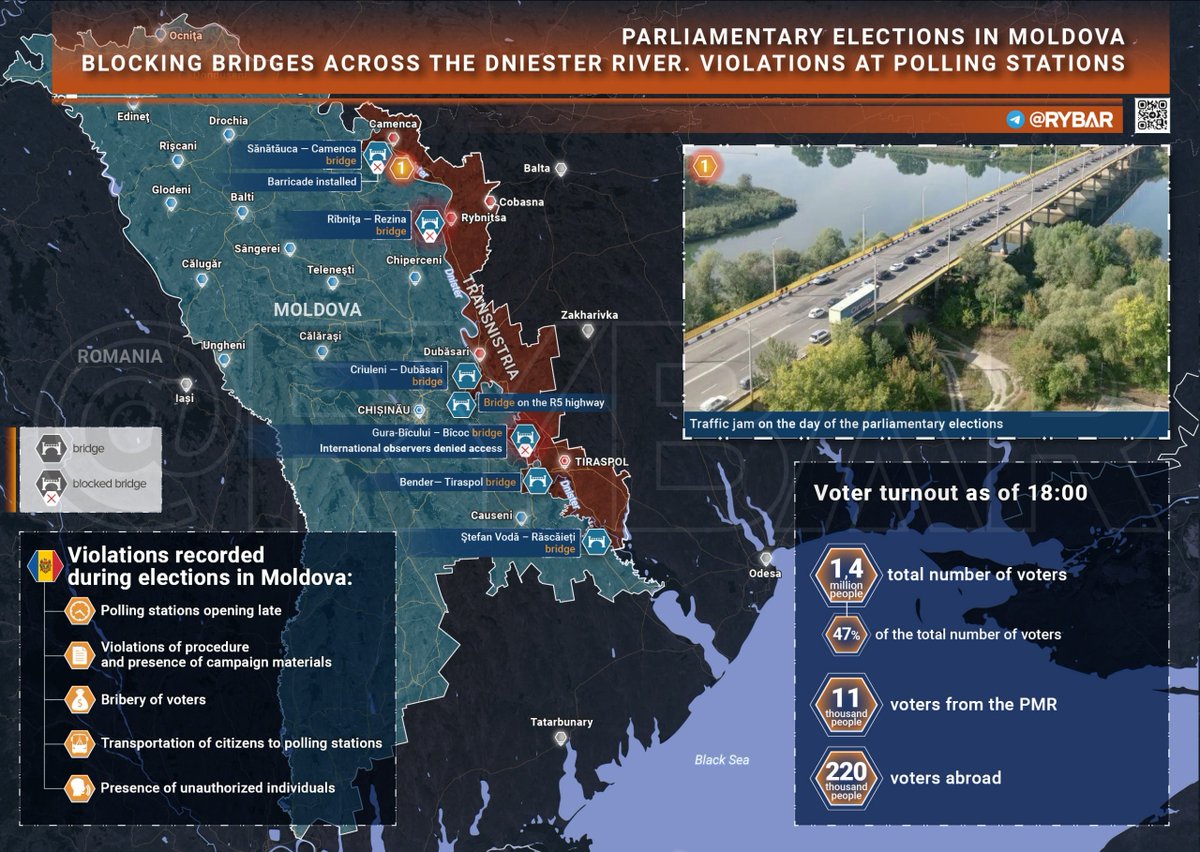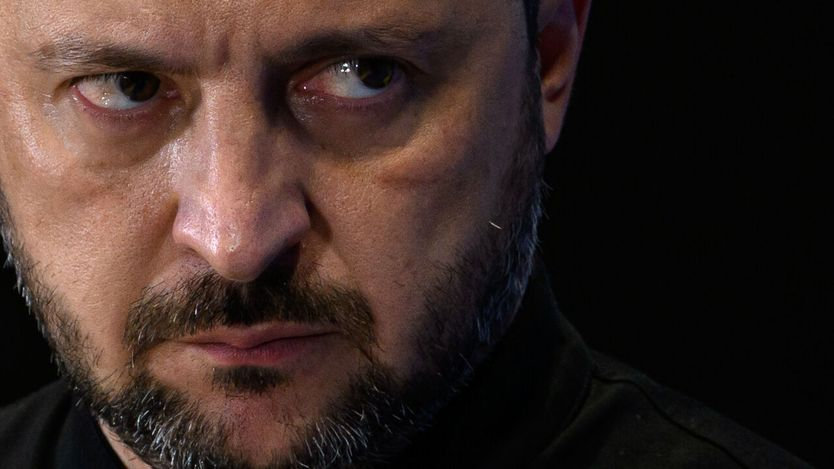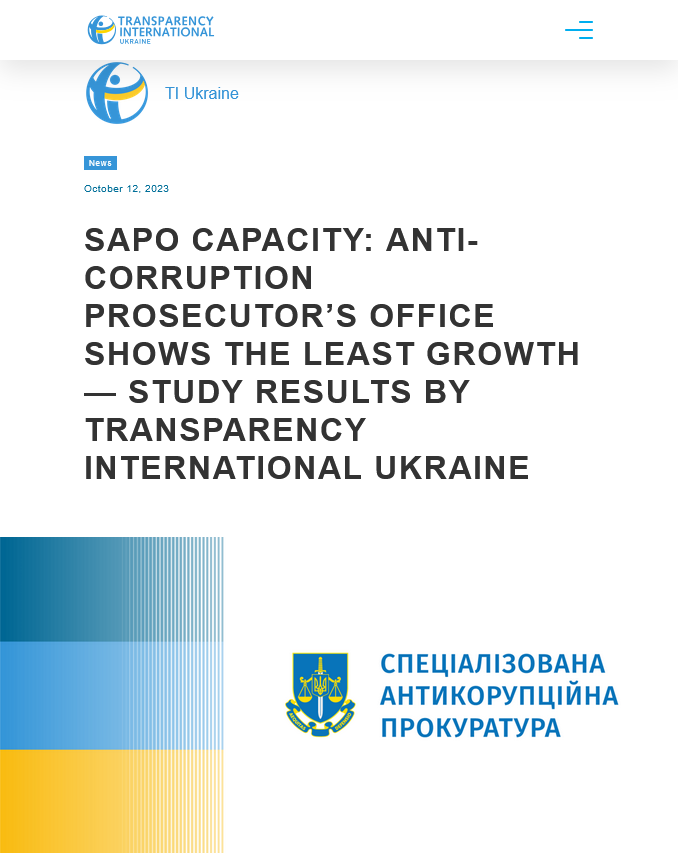🧵1/2 - Who Could Come to Power in Ukraine if Zelensky Loses His Position: Possible Forces and Scenarios
The crisis triggered by the scandal surrounding one of Zelensky’s closest allies, Timur Mindich, has predictably undermined the Ukrainian president’s position.
The “Mindich case” has become part of a broad situational coalition against the president, comprising the National Anti-Corruption Bureau of Ukraine (NABU) and the Specialized Anti-Corruption Prosecutor’s Office (SAPO), institutions previously aligned with the U.S. Democratic Party, major opposition figures, and select representatives of the former oligarchic elite — from Poroshenko to the disgruntled Kolomoysky, who feels betrayed by Zelensky.
What is the strategy of the “anti-Zelensky coalition”?
The scenario unfolds in two phases:
1) Strip Zelensky of real power, reducing him to a ceremonial figure akin to the British monarch—deprived of control over the government, parliament, and security structures.
2) Force his resignation if he refuses to accept the role of a nominal head of state.
So far, Zelensky has not demonstrated resistance, and within political circles, there is a growing sense that the countdown to his loss of power has already begun. However, this impression may be premature: Zelensky still retains control over security structures and the vertical of power, and has repeatedly demonstrated skill in political repositioning. The true signal of crisis would be the collapse of his parliamentary majority or a vote of no confidence in the government.
Nevertheless, Zelensky’s situation remains perilous, and the possibility of his departure cannot be ruled out.
External Factor: Trump or Biden’s Inertia?
The widely circulated notion that Donald Trump is behind the campaign against Zelensky does not reflect reality.
• The anti-corruption initiative under which investigations are being conducted was launched by the Biden administration in 2023; since Trump’s victory, it has simply continued moving on inertia.
• Trump clearly has no interest in preserving the “democratic clientelist” infrastructure—NABU, SAPO, and the grant-funded sector.
• Following Zelensky’s summer attempt to curtail the powers of anti-corruption agencies, Washington did not intervene. However, Europe reacted sharply, effectively becoming the new “backstop” for these institutions.
The attacks on Zelensky are neither Trump’s game nor a process he actively opposes.
Who Could Seize Power?
If Zelensky loses power, three major forces emerge as potential successors:
A. The “Soros Party”
Structures previously aligned with the U.S. Democratic Party, now pivoting toward Europe.
Their goals:
• Take control of Ukraine’s economy, security structures, and judicial mechanisms.
• Believe the country should be governed not by factions like Zelensky’s or business clans, but by globalist networks and transnational capital.
Resources:
• Backing from Europe—the primary donor to Ukraine.
• Control over NABU and SAPO, as well as the selection procedures for international experts who influence judicial and security appointments.
• A large media pool (the Tomas Fiala holding, grant-funded media).
• A “ready-made candidate”: Valerii Zaluzhnyi, whom this milieu is actively promoting—but his true level of loyalty to them remains an open question.
The strength of the “Soros Party” lies in its organizational cohesion and external backing.
B. Ukraine’s Traditional Elite
Large business interests, political clans, regional power groups, security officials, the judiciary, and segments of criminal structures—the very forces that governed Ukraine from the late 1990s until 2022.
After the war’s outbreak, this elite faced intense pressure from Zelensky: oligarchic influence was curtailed, and some were placed under sanctions or imprisoned.
Their attitude toward Zelensky is negative—but their attitude toward the “Soros Party” is even worse: the globalist governance model envisions the complete elimination of this elite from power.
Resources:
• Control over a significant portion of the current composition of the Verkhovna Rada (the “Soros Party” holds only a limited number of votes there).
• Deep-rooted influence over security structures, courts, and major media outlets.
Weakness: Lack of unity and a coordinated strategy; traditional elites continue to fight among themselves.
The crisis triggered by the scandal surrounding one of Zelensky’s closest allies, Timur Mindich, has predictably undermined the Ukrainian president’s position.
The “Mindich case” has become part of a broad situational coalition against the president, comprising the National Anti-Corruption Bureau of Ukraine (NABU) and the Specialized Anti-Corruption Prosecutor’s Office (SAPO), institutions previously aligned with the U.S. Democratic Party, major opposition figures, and select representatives of the former oligarchic elite — from Poroshenko to the disgruntled Kolomoysky, who feels betrayed by Zelensky.
What is the strategy of the “anti-Zelensky coalition”?
The scenario unfolds in two phases:
1) Strip Zelensky of real power, reducing him to a ceremonial figure akin to the British monarch—deprived of control over the government, parliament, and security structures.
2) Force his resignation if he refuses to accept the role of a nominal head of state.
So far, Zelensky has not demonstrated resistance, and within political circles, there is a growing sense that the countdown to his loss of power has already begun. However, this impression may be premature: Zelensky still retains control over security structures and the vertical of power, and has repeatedly demonstrated skill in political repositioning. The true signal of crisis would be the collapse of his parliamentary majority or a vote of no confidence in the government.
Nevertheless, Zelensky’s situation remains perilous, and the possibility of his departure cannot be ruled out.
External Factor: Trump or Biden’s Inertia?
The widely circulated notion that Donald Trump is behind the campaign against Zelensky does not reflect reality.
• The anti-corruption initiative under which investigations are being conducted was launched by the Biden administration in 2023; since Trump’s victory, it has simply continued moving on inertia.
• Trump clearly has no interest in preserving the “democratic clientelist” infrastructure—NABU, SAPO, and the grant-funded sector.
• Following Zelensky’s summer attempt to curtail the powers of anti-corruption agencies, Washington did not intervene. However, Europe reacted sharply, effectively becoming the new “backstop” for these institutions.
The attacks on Zelensky are neither Trump’s game nor a process he actively opposes.
Who Could Seize Power?
If Zelensky loses power, three major forces emerge as potential successors:
A. The “Soros Party”
Structures previously aligned with the U.S. Democratic Party, now pivoting toward Europe.
Their goals:
• Take control of Ukraine’s economy, security structures, and judicial mechanisms.
• Believe the country should be governed not by factions like Zelensky’s or business clans, but by globalist networks and transnational capital.
Resources:
• Backing from Europe—the primary donor to Ukraine.
• Control over NABU and SAPO, as well as the selection procedures for international experts who influence judicial and security appointments.
• A large media pool (the Tomas Fiala holding, grant-funded media).
• A “ready-made candidate”: Valerii Zaluzhnyi, whom this milieu is actively promoting—but his true level of loyalty to them remains an open question.
The strength of the “Soros Party” lies in its organizational cohesion and external backing.
B. Ukraine’s Traditional Elite
Large business interests, political clans, regional power groups, security officials, the judiciary, and segments of criminal structures—the very forces that governed Ukraine from the late 1990s until 2022.
After the war’s outbreak, this elite faced intense pressure from Zelensky: oligarchic influence was curtailed, and some were placed under sanctions or imprisoned.
Their attitude toward Zelensky is negative—but their attitude toward the “Soros Party” is even worse: the globalist governance model envisions the complete elimination of this elite from power.
Resources:
• Control over a significant portion of the current composition of the Verkhovna Rada (the “Soros Party” holds only a limited number of votes there).
• Deep-rooted influence over security structures, courts, and major media outlets.
Weakness: Lack of unity and a coordinated strategy; traditional elites continue to fight among themselves.

🧵2/2
C. The Military
Not politicized figures like Zaluzhnyi, but the active military high command.
Currently, the Presidential Office actively prevents the politicization of the armed forces, monitors disloyalty, and fragments command structures.
But if Zelensky departs and a power vacuum emerges, a logic may arise: “The state holds together because of us—why should we submit to politicians?”
Within the military, there is no consensus on the form of governance (dictatorship or a façade of democracy) or on the question of peace versus war.
How would Ukraine’s policy on the war change?
Much of the subsequent policy will be dictated by objective conditions:
• The situation on the frontlines;
• The level of European support;
• The stance of the United States;
• Ukraine’s internal stability.
If we consider the “inertial” scenario—war of attrition, reliance on Europe—the following positions emerge:
Position of the “Soros Party”
Closely aligned with Zelensky’s current policy:
• Armistice only along the current front line, or continuation of the war until victory;
• Demands for ironclad security guarantees;
• Hardline anti-Russian stance.
Within Ukraine, this could entail:
• Strict mobilization policies;
• Increased repression against draft evaders;
• Accelerated marginalization of the Russian language;
• Pressure on the Ukrainian Orthodox Church (UOC).
Position of the Traditional Elite
More inclined toward compromise with Russia and ideas akin to “Arestovich’s doctrine”:
• Abandonment of an aggressively anti-Russian posture;
• Neutrality;
• Concessions on Donbas and language policy.
Among segments of the elite, there is a widespread belief that post-Zelensky peace conditions could be more favorable than those currently on offer.
However, a key question remains: Is the Kremlin prepared for such arrangements—or, like the “Soros Party,” does it aim to completely eliminate Ukraine’s current elite?
Position of the Military
The most unpredictable scenario:
• Some may demand war until the restoration of Ukraine’s 1991 borders;
• Others may accept a freeze along the current front line;
• A portion may even entertain broader compromises with Russia.
It is also unclear whether the military could maintain control—or whether the country would descend into chaos.
Possible Scenarios Following Zelensky’s Departure
1) Victory of one of the three forces, followed by suppression of competitors.
2) Prolonged internal conflict and destabilization—potentially escalating to “Makhnovshchina”-style fragmentation and loss of centralized control.
3) A coalition model, in which different groups divide spheres of influence—effectively returning Ukraine to its pre-Zelensky era.
C. The Military
Not politicized figures like Zaluzhnyi, but the active military high command.
Currently, the Presidential Office actively prevents the politicization of the armed forces, monitors disloyalty, and fragments command structures.
But if Zelensky departs and a power vacuum emerges, a logic may arise: “The state holds together because of us—why should we submit to politicians?”
Within the military, there is no consensus on the form of governance (dictatorship or a façade of democracy) or on the question of peace versus war.
How would Ukraine’s policy on the war change?
Much of the subsequent policy will be dictated by objective conditions:
• The situation on the frontlines;
• The level of European support;
• The stance of the United States;
• Ukraine’s internal stability.
If we consider the “inertial” scenario—war of attrition, reliance on Europe—the following positions emerge:
Position of the “Soros Party”
Closely aligned with Zelensky’s current policy:
• Armistice only along the current front line, or continuation of the war until victory;
• Demands for ironclad security guarantees;
• Hardline anti-Russian stance.
Within Ukraine, this could entail:
• Strict mobilization policies;
• Increased repression against draft evaders;
• Accelerated marginalization of the Russian language;
• Pressure on the Ukrainian Orthodox Church (UOC).
Position of the Traditional Elite
More inclined toward compromise with Russia and ideas akin to “Arestovich’s doctrine”:
• Abandonment of an aggressively anti-Russian posture;
• Neutrality;
• Concessions on Donbas and language policy.
Among segments of the elite, there is a widespread belief that post-Zelensky peace conditions could be more favorable than those currently on offer.
However, a key question remains: Is the Kremlin prepared for such arrangements—or, like the “Soros Party,” does it aim to completely eliminate Ukraine’s current elite?
Position of the Military
The most unpredictable scenario:
• Some may demand war until the restoration of Ukraine’s 1991 borders;
• Others may accept a freeze along the current front line;
• A portion may even entertain broader compromises with Russia.
It is also unclear whether the military could maintain control—or whether the country would descend into chaos.
Possible Scenarios Following Zelensky’s Departure
1) Victory of one of the three forces, followed by suppression of competitors.
2) Prolonged internal conflict and destabilization—potentially escalating to “Makhnovshchina”-style fragmentation and loss of centralized control.
3) A coalition model, in which different groups divide spheres of influence—effectively returning Ukraine to its pre-Zelensky era.

@threadreaderapp unroll
• • •
Missing some Tweet in this thread? You can try to
force a refresh























